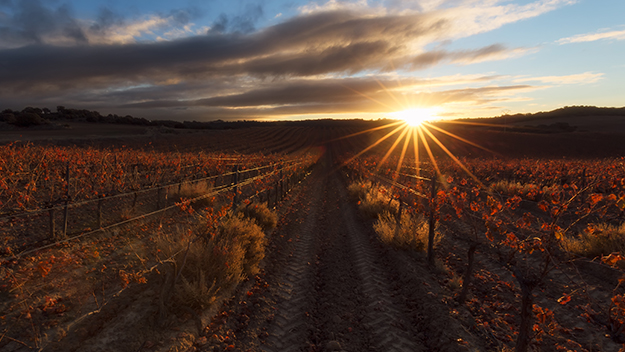Find your winery or vineyard
1 Wineries and Vineyards for sale in North Aegean - Sporades
Infographic of the Denomination of Origin

Change to imperial units (ft2, ac, °F)Change to international units (m2, h, °C)
Sporades
There is one denomination classified as POP (Formerly OPAP and OPE): OPAP SAMOS
OPAP SAMOS ΣΆΜΟΣ
This is a Greek island in the eastern Aegean Sea, belonging to the Sporades group of islands off the Ionian coast of Asia Minor (Anatolia, Turkey). According to legend, the Argonaut and first king of Samos, Ankaios, brought the vine to the island in 1000 BC. Three famous men were born here, the mathematician Pythagoras, the mathematician Aristarchus and the philosopher Epicurus.
In the second half of the 15th century, part of the population moved to the island of Chios to protect themselves from the Ottomans. Samos was deserted and the vineyards destroyed. One hundred years later, the Ottomans helped those Samoans who wanted to return to their island to return to the island. The vineyards were replanted, with a higher proportion of white varieties.
Towards the end of the 19th century, Samos wine was exported to Europe, mainly red wines of indigenous varieties. In 1892, the island was hit and almost all the vineyards were destroyed. Reconstruction was mainly with the white variety Moschato Aspro (white Muscat). In 1934 the law established that only white wines made with 100% Moschato Aspro could use the Samos origin. Today, this variety covers 95% of the terroir. The remaining 5% is occupied by the two red varieties Ritino (Mavroudi Arachovis) and Fokiano, from which rosé wines are made. The vineyards cover some 1,800 ha, on steep terrain on calcareous subsoil and often on terraces. The best vineyards are between 600 and 800 metres above sea level where the vines are well ventilated by the Meltemi (Aegean wind during the summer months) which blows frequently and the rainfall also provides sufficient humidity. Important areas are the slopes of Ambelos, the slopes of Kerkis at 1,500 metres and the western mountain of Samos.
TYPES OF GRAPES
In Samos there are three POP appellations and they are all made with 100% Moschato Aspro. However, there are differences according to the level of quality, understood as old vines, time of harvesting of the grapes, sprites (fortification with alcohol), ageing and maturation. Thus there is this classification:
Samos Vino Dulce: in this version Tsipouro Greek pomace brandy is added to the grape must before fermentation, reaching 15º. The residual sugar is about 200 g/l. This sweet golden wine is characterised by its aroma of oranges and spices. The Anthemis version (old name of Samos) matures at least 3 years but usually 5 years in oak barrels.
Samos Vino Dulce Natural: This version uses lower yielding grapes. Fermentation is interrupted early by spriting at 15º. The residual sugar content is about 150 g/l. Within this category there is a higher quality Grand Cru typology, with late harvested overripe grapes from the best sites, aged in oak barrels for at least 5 years but usually longer and then another 5 to 10 years of bottle ageing.
Samos Naturally Sweet Wine: the best version, the wine is naturally sweet, i.e. without sprites, is made from sun-dried grapes and is called Nectar de Samos on the label. These wines carry the sub-designation Liastos, which in Greece refers to an unfiltered sweet sultana wine. The best grapes are dried on straw mats for 1 week. During the slow fermentation a natural alcohol content of 14º and a residual sugar of 360 g/l is achieved. The wine is aged for at least 3 years in oak barrels and another 2 years in the bottle. It has a golden brown colour with reddish tones and a delicate acidity structure.
Other wines and spirits: there are also two country wines in Samos, the white wine Samena named after the ancient warships of Samos, is made from slightly ripe Moschato Aspro grapes and is dry vinified at 12º alcohol. The Golden Samena variant is made from ripe, scarce grapes with low residual sweetness.
The rosé cuvée mentioned above is made from the red wine varieties Fokiano and Ritino and is characterised by an almost orange colour. There is also a retsina made from Muscat grapes.
The largest producer is UWC Samos, the Samos cooperative founded in 1934, one of the oldest in Greece and one of the 10 largest wineries in the country. The members cultivate 1,400 ha, which is more than ¾ of the total vineyard of the island, producing about 5M of wine per year, 70% of which is exported. Other well-known producers are Kourtakis, Nopera Wines, Tsantali and Vakakis Wines.
Discover more wineries and vineyards for sale in these wine regions in Islands
Subscribe to our mailing list to receive news about wineries and vineyards.






